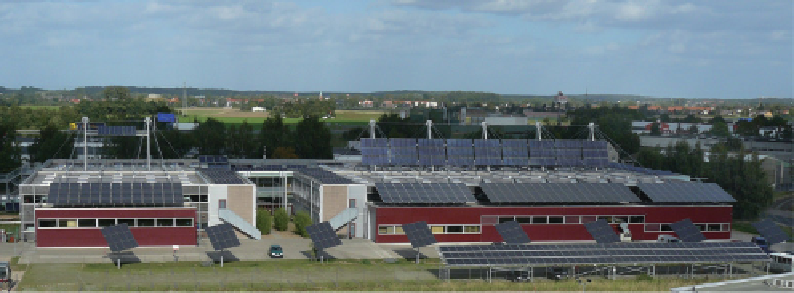Environmental Engineering Reference
In-Depth Information
Large amounts of heat often escape through the open shed doors of factories
during the loading and unloading of heavy goods vehicles. This factory keeps heat
losses at a minimum because the loading and unloading zones are situated inside
the building. A direct connection to local public transport, parking facilities for
bicycles and showers for cyclists provide employees with a climate-compatible
workplace.
Figure 14.7
Solvis zero-emissions factory in Braunschweig, Germany.
Source: SOLVIS, www.solvis.de.
14.2.3 Carbon-Free Heavy Equipment Factory
The 'factory of the future', completed in May 2000 by Wasserkraft Volk AG, is the
fi rst energy self-suffi cient carbon-free heavy equipment factory built in Germany.
The administration building is mainly built of timber from the Black Forest
area. The entire building including the factory fl oor is very well insulated. The
offi ces are orientated towards the south, and the factory has generous overhead
lighting.
This construction enables maximum use of daylight and the incoming sunlight
covers some of the heating needs. A 30 square metre sun collector on the adminis-
tration building actively uses solar energy. At the heart of the factory's energy
supply is its own hydropower plant with 320 kilowatts of output (Figure 14.8). The
turbines integrated into the building use natural water from the nearby Elz River.
The waste heat from the generator covers about 10% of the heat requirement. Three
heat pumps with a heat output of 130 kilowatts extract heat from the groundwater
and supply the remaining heat energy.
The hydropower plant generates an annual surplus of around 900 000 kilowatt hours
of electric energy, which the factory feeds into the public grid. This makes it not
only a carbon-free factory but also a plus-energy one that supplies additional
ecological electricity.

